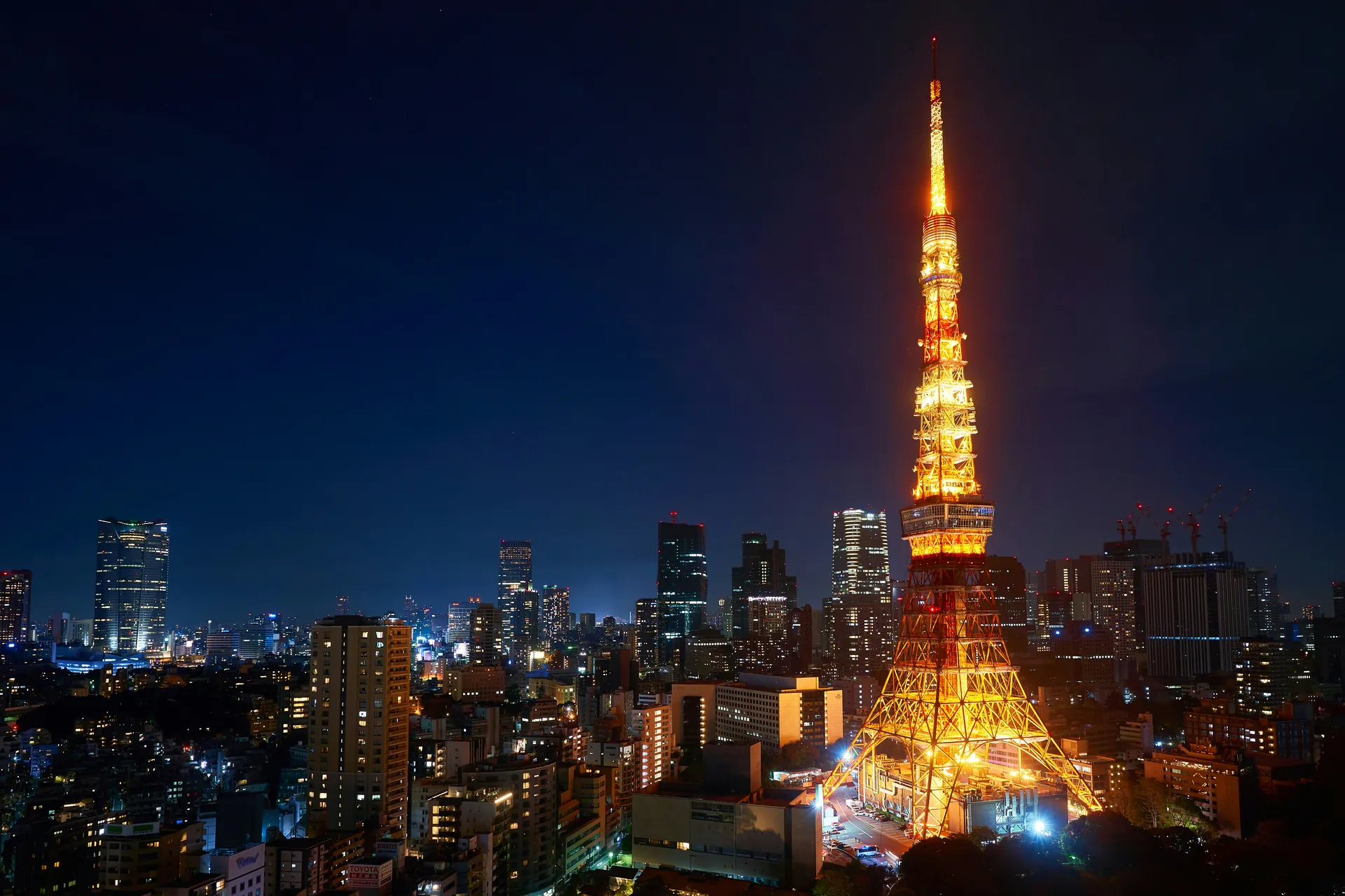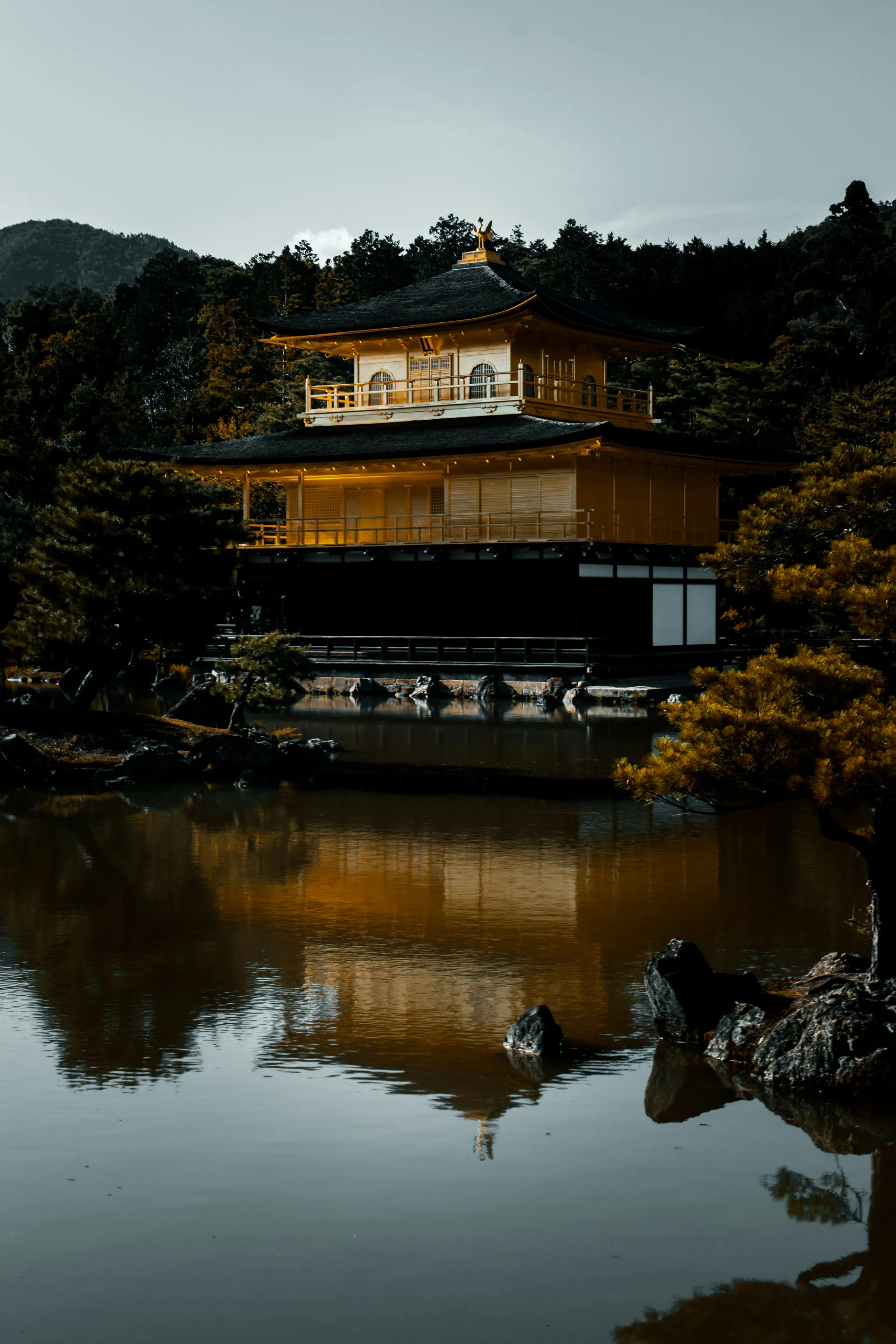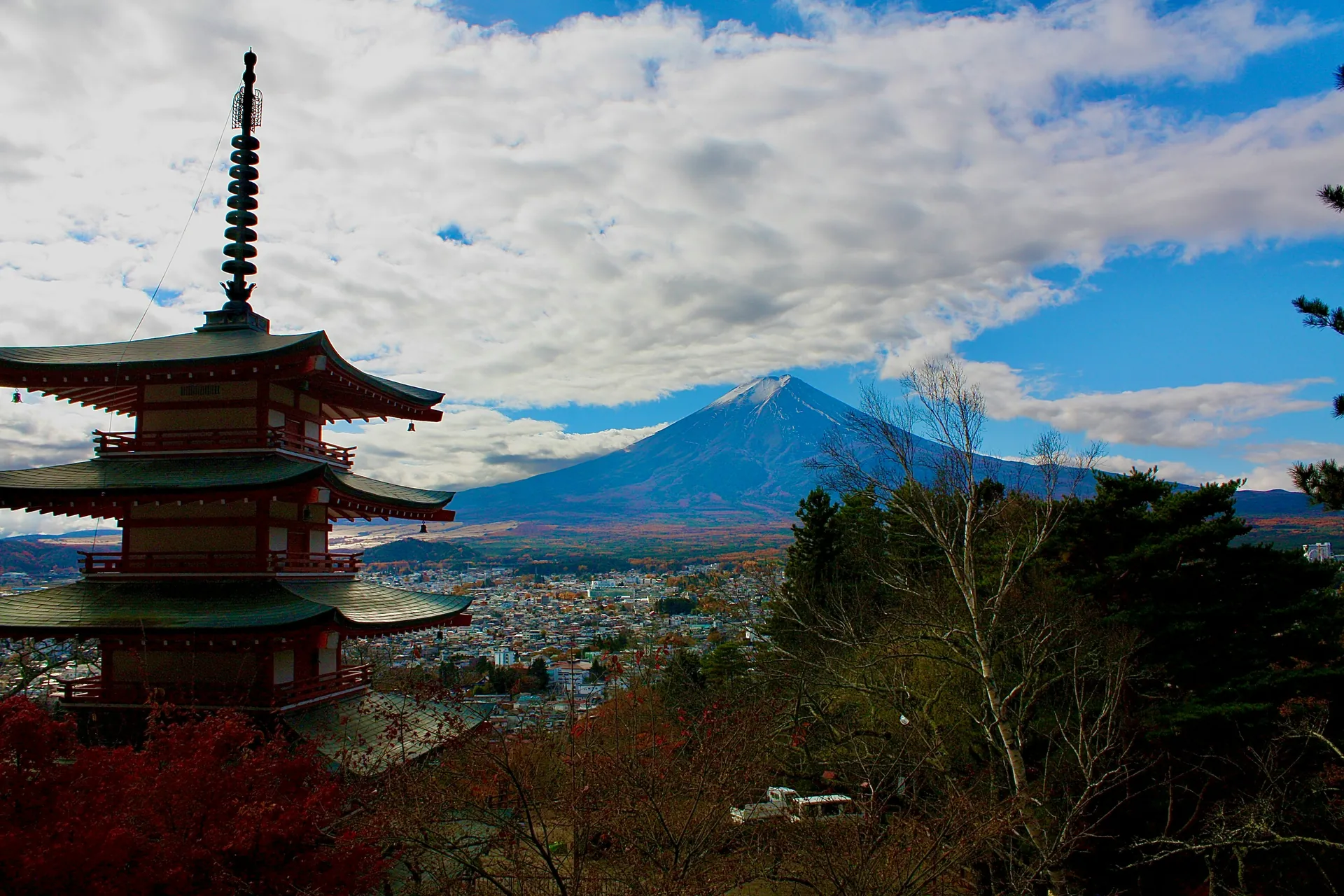When planning a trip to Japan, the sheer variety of captivating destinations can feel overwhelming. However, there are certain places that stand out as must-visit gems. Whether you're fascinated by the neon-lit skyscrapers of a futuristic city, the tranquil gardens of ancient temples, or the awe-inspiring beauty of natural wonders, Japan offers something for every type of traveler.
From the bustling streets of Tokyo to the timeless elegance of Kyoto, and from the majestic views of Mount Fuji to the peaceful hot spring resorts, Japan is a country where modernity and tradition blend seamlessly. It combines urban excitement with serene natural landscapes, offering both cutting-edge innovation and historical treasures.
Planning your visit to Japan promises an unforgettable adventure. This guide will highlight the best places to explore, ensuring you make the most of your journey through this incredible country.
Whether you're seeking full-day tours, half-day excursions, or simply the perfect accommodations and hot springs to unwind, this guide will help you navigate Japan's rich and diverse tapestry.
Table of Contents
1. Tokyo: The Futuristic Metropolis

Shinjuku and Shibuya: Centers of Pop Culture
Tokyo's vibrant pop culture scene comes alive in the districts of Shinjuku and Shibuya. Shinjuku, famous for its diverse neighborhoods, is home to the stunning Shinjuku Gyoen National Garden, a peaceful retreat amidst the city's hustle and bustle. This garden is particularly breathtaking during cherry blossom season or the autumn foliage, offering a serene escape from urban life.
Shinjuku is also celebrated for its dynamic nightlife. The Golden Gai area features tiny bars and clubs that cater to a wide range of interests, making it a hotspot for evening entertainment.
Meanwhile, in Shibuya, the pulse of Tokyo's youth culture is unmistakable. The iconic Shibuya Scramble Crossing is renowned for its mesmerizing flow of pedestrians. For a panoramic view of this bustling district, visit the Shibuya Sky Observatory, which offers spectacular 360-degree views of the city from its open-air rooftop. This experience is especially captivating during sunset or at night when the city is illuminated, showcasing Tokyo's sprawling metropolis in all its glory.
Asakusa: A Glimpse into Old Tokyo
For a journey into Tokyo's rich historical past, Asakusa is a must-visit destination. This ancient district is home to the Senso-ji Temple, one of Japan's oldest and most famous temples. Leading to the temple is Nakamise Shopping Street, lined with traditional snack shops and souvenir stalls, offering a taste of old Japan.
Asakusa is also known for its vibrant festivals, such as the Sanja Matsuri, which celebrates traditional Japanese culture and customs. The district beautifully blends the old with the new, providing visitors with a unique contrast to Tokyo's futuristic aspects.
Here, you can explore traditional Japanese restaurants, tea houses, and even enjoy rickshaw rides, making Asakusa an ideal place to immerse yourself in Japan's historical heritage.
Akihabara: Mecca for Tech Enthusiasts
Akihabara, often called "Electric Town", is a paradise for tech enthusiasts and fans of Japanese pop culture. This district is packed with electronic stores, arcades, and shops specializing in manga, anime, and video games.
Visitors can discover the latest gadgets, enjoy classic arcade games, or experience themed cafes such as maid cafes, which offer a unique and interactive experience.
Akihabara is also a hub of innovation, showcasing the latest in Japanese technology—from cutting-edge electronics to advanced robotics. Whether you're a tech aficionado, an anime lover, or simply curious about Japan's vibrant pop culture, Akihabara promises an unforgettable and immersive experience.
2. Kyoto: The Heart of Traditional Japan

Temples and Shrines: Kinkaku-ji and Fushimi Inari Taisha
Kyoto is renowned for its stunning temples and shrines, each offering a unique glimpse into Japan's rich spiritual heritage. One of the most iconic sites is the Kinkaku-ji Temple, also known as the Golden Pavilion.
This Zen temple is famous for its two floors covered in gold leaf, reflecting beautifully in the surrounding pond and creating a serene and picturesque scene. The temple's gardens, designed to promote a sense of tranquility, are perfect for a reflective stroll.
Another must-visit is the Fushimi Inari Taisha Shrine, famous for its thousands of vibrant orange torii gates that form a tunnel up the mountain. This Shinto shrine is dedicated to Inari, the god of rice, and the hike through the gates offers a unique and peaceful experience. The trail, which can take around 1.5 to 3 hours to complete, passes through small shrines and offers stunning views of Kyoto, especially during early morning or late evening when the crowds are smaller.
Gion District: Encounter Geisha Culture
The Gion District in Kyoto is a window into Japan's traditional geisha culture. This historic area is known for its well-preserved traditional architecture, tea houses, and the occasional sighting of geishas and maikos (apprentice geishas) as they go about their daily routines.
The district's serene atmosphere, especially in the evening, makes it an ideal place for a leisurely stroll. Visitors can also explore the traditional shops and restaurants, and even participate in a traditional tea ceremony or other cultural activities to deepen their understanding of this unique aspect of Japanese culture.
Arashiyama Bamboo Grove
Located on the western outskirts of Kyoto, the Arashiyama Bamboo Grove is a natural wonder that offers an otherworldly experience. The grove is characterized by towering bamboo stalks that filter the sunlight, creating a serene and almost mystical atmosphere.
Walking through the lush paths of the bamboo forest is a must-do activity, providing a peaceful escape from the urban bustle. The area is also home to several temples and shrines, including the famous Tenryu-ji Temple, which features beautiful Zen gardens and a large pond.
3. Natural Wonders and Historic Sites

Mt. Fuji: Japan’s Majestic Icon
Mt. Fuji, standing at 3,776 meters, is Japan's highest mountain and a symbol of the country's natural beauty. This nearly perfectly shaped volcano, located on the border between Yamanashi and Shizuoka prefectures, has been a subject of worship and artistic inspiration for centuries.
For those who want to experience Mt. Fuji up close, the Fuji Five Lakes (Fujigoko) region at the northern foot of the mountain offers stunning views and a serene natural setting. Here, you can enjoy activities such as hiking, boating, or simply taking in the breathtaking scenery.
For a more leisurely experience, consider visiting Hakone, a nearby hot spring resort town that provides multiple vantage points to admire Mt. Fuji. The mountain is also visible from various other locations, including the Tokaido Shinkansen train line between Tokyo and Osaka, and from high-rise observatories in Tokyo such as the Tokyo Metropolitan Government Office Observatory.
Hiroshima Peace Memorial Park
Hiroshima Peace Memorial Park is a poignant and historic site that serves as a reminder of the devastating effects of war. Located in Hiroshima, this park is dedicated to the victims of the atomic bombing in 1945. The park features several key landmarks, including the Atomic Bomb Dome, a UNESCO World Heritage Site, which is one of the few structures that survived the bombing.
The Hiroshima Peace Memorial Museum, also within the park, provides a detailed and moving account of the events surrounding the bombing and the subsequent reconstruction of the city.
A visit to Hiroshima Peace Memorial Park is a somber and reflective experience, offering insights into Japan's recent history and the importance of peace. The park also includes the Children's Peace Monument and the Peace Bell, which are symbols of the city's commitment to peace and nuclear disarmament.
Yakushima Island
Located in the southern part of Japan, Yakushima Island is a natural paradise known for its lush rainforests, towering granite mountains, and picturesque waterfalls. This island, part of the Kirishima-Yaku National Park, is often referred to as a "nature lover's paradise" due to its diverse and pristine ecosystems.
Visitors can hike through the ancient cedar forests, explore the island's many waterfalls, including the famous Oko-no-Taki waterfall, or relax on the beautiful beaches along the coast.
Yakushima Island is also famous for its unique wildlife and is home to many species found nowhere else in the world. The island's rugged terrain and varied landscapes make it an ideal destination for hiking, trekking, and other outdoor activities, offering an unforgettable experience for nature enthusiasts.
Conclusion
In conclusion, Japan is a country that seamlessly blends tradition with modernity, offering a diverse and enriching experience for every traveler. From the futuristic metropolis of Tokyo, with its vibrant districts like Shinjuku and Shibuya, to the traditional heart of Kyoto, with its historic temples and geisha culture, there is truly something for everyone.
The natural wonders, such as Mt. Fuji and Yakushima Island, provide breathtaking scenery and unique outdoor experiences.
Historic sites like Hiroshima Peace Memorial Park serve as poignant reminders of the past. Whether you're interested in technology, nature, history, or culture, Japan's efficient systems, welcoming people, and stunning landscapes make it a destination that is both safe and unforgettable. So, start planning your trip to Japan today and immerse yourself in the beauty and contrasts of this incredible country.
FAQ
Do I need any vaccinations before traveling to Japan?
Yes, you should be up-to-date on routine immunizations such as polio, Tdap (tetanus, diphtheria, and pertussis), MMR (measles, mumps, and rubella), and Hepatitis B. Additionally, Hepatitis A and COVID-19 vaccines are recommended for most travelers. The Japanese encephalitis vaccine may be necessary for those visiting rural areas during peak transmission periods.
Are there any visa requirements for visiting Japan, and if so, which countries are exempt?
Visa requirements for Japan vary by nationality. Citizens of certain countries, including the U.S., Canada, the UK, and others, are exempt from visa requirements for short-term stays (up to 90 days) for tourism, business, or visiting relatives. However, nationals of many other countries need to obtain a visa.
What are the customs regulations for items I can bring into Japan?
To import goods into Japan, you must declare them to the Director-General of Customs and obtain an import permit after necessary examinations. Certain items, such as cannabis, handguns, and specific chemicals, are prohibited.
Other goods may require permits under various laws, including those related to public safety, hygiene, and industry.
Are credit cards widely accepted in Japan, or should I carry cash?
Credit cards are generally accepted in major cities and large establishments in Japan, but it is still advisable to carry cash, especially for smaller, individual-owned stores, public transportation for short distances, and places like Shinto shrines and Buddhist temples.




.webp)






